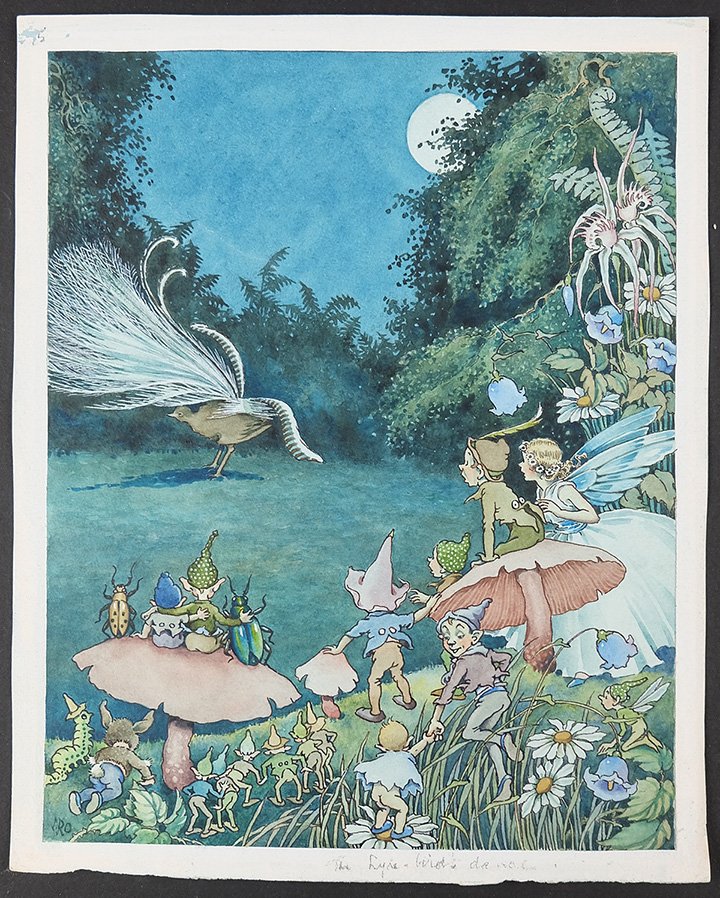Mary Poppins
Mary Poppins by Pamela Lyndon Travers is one of my favourite books in the National Library’s Story Time: Australian Children’s Literature exhibition and reminds me of my childhood, watching movies with my family, and is still one of my favourite childhood classics to this day. It took me until an embarrassingly late age to realise the author of the book first published in 1934 was in fact an Australian! This book has taught me three main things, the first is of a woman’s right to an endlessly deep bag where she can carry anything and everything – if only we could all have such an invisibly large (and lightweight) bag. The second, that laughter can cure anything, although it might not make you float merrily to the ceiling. And finally, the power of a lengthy word and a well written song that can be stuck in your head for longer than you’d care to, and not to mention those around you!
Dust jacket and binding of Mary Poppins after receiving conservation treatment at the National Library of Australia.
Once this book was selected for exhibition, it was brought to the Preservation lab to be condition checked and receive conservation treatment to ensure it could be safely handled and displayed without any risk of damage to the object. After assessing the book, it could be seen that the binding itself was in stable condition, however the paper dust jacket was in need of repair, with torn edges and corner losses. It was clear this book had been well-loved. To treat the jacket, a conservation grade adhesive was used to adhere Japanese paper to the torn areas and infill losses.
The repair paper was first toned with acrylic paints to match the colours of the dust jacket to remain sympathetic and not draw the eye.
Toning Japanese paper and a Japanese brush with yellow acrylic paint to match the yellow dust jacket, treatment of the dust jacket by conservator, Freya Merrell, using wheat starch paste and Japanese tissue paper.
![]()
Timelaspse video of conservation of the dust-jacket
Before treatment of dust jacket

After treatment of dust jacket
The aim of this treatment was not to bring the book back to its original state, but to ensure its longevity in the collection and reduce any further risk of tearing or loss when handled. Once treated, the book was carefully placed in a display showcase under low lighting to ensure no fading would occur.
Before and after treatment of the dust jacket for Mary Poppins on the bound volume
Fairyland
Ida Rentoul Outhwaite, The Lyre-bird's Dance, between 1916 and 1948, nla.cat-vn1108787
This next title, Ida Outhwaite’s Fairyland, is another favourite of mine in the exhibition, and plays into my fondness for history and art. It was again written in the early days of children’s literature in Australia by a young female author, paving the way for literature in Australia.
As a child, I lived in a fairy world. I remember imagining them flying around our garden, sipping water from flower petals, but I never imagined them smoking cigars with koalas!
In terms of preparation for exhibition, this book required very little treatment prior to display. However there are two of Ida Outhwaites’ watercolours on display on the wall nearby, The Lyre-bird’s Dance and Cocktails in the Bush, which required a little more consideration into how to best display and preserve the vibrant watercolours she used. Light causes permanent and irreversible damage that affects the chemical composition, physical structure. Almost all watercolours are at a high risk of fading, however these pigments are particularly vulnerable. These works, as far as we know, have never been on display before, and is one of the reasons it is in such impeccable condition and the colours remain so strong and lively.
How were we going to be able to interpret or capture any fading that might occur? Luckily, we have a tool for that, called a spectrophotometer. This is a non-destructive analytical technique that simply put, allows us to measure and assign a numerical value to colour. By measuring these pigments before they are put on display and at regular intervals during and after display, we can monitor any changes that occur, including those not visible to the human eye just yet.
Using spectrophotometry to analyse the colour pigments of Ida Outhwaite’s watercolour, Cocktail’s in the Bush
To protect these works, and create a more interactive display, velvet curtains were produced to cover the works when not being viewed, but could be easily lifted up when visitors wanted to take a look. These works have now been measured three times, and all measurements have come back with no notable changes, meaning that the work has not had any light damage, an excellent outcome! These curtains have protected the works from irreparable light damage, and maintained their vibrancy for future generations to experience.
Freya Merrell works in Preservation Services as a Senior Conservator at the National Library of Australia, working largely with in-house exhibitions.





